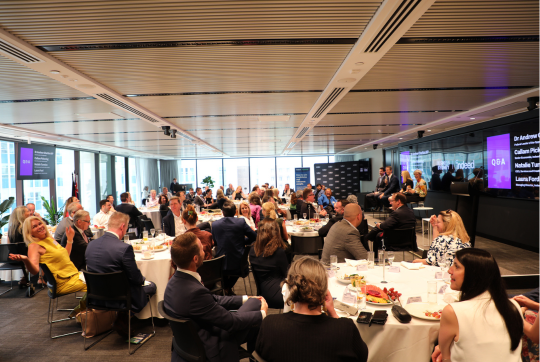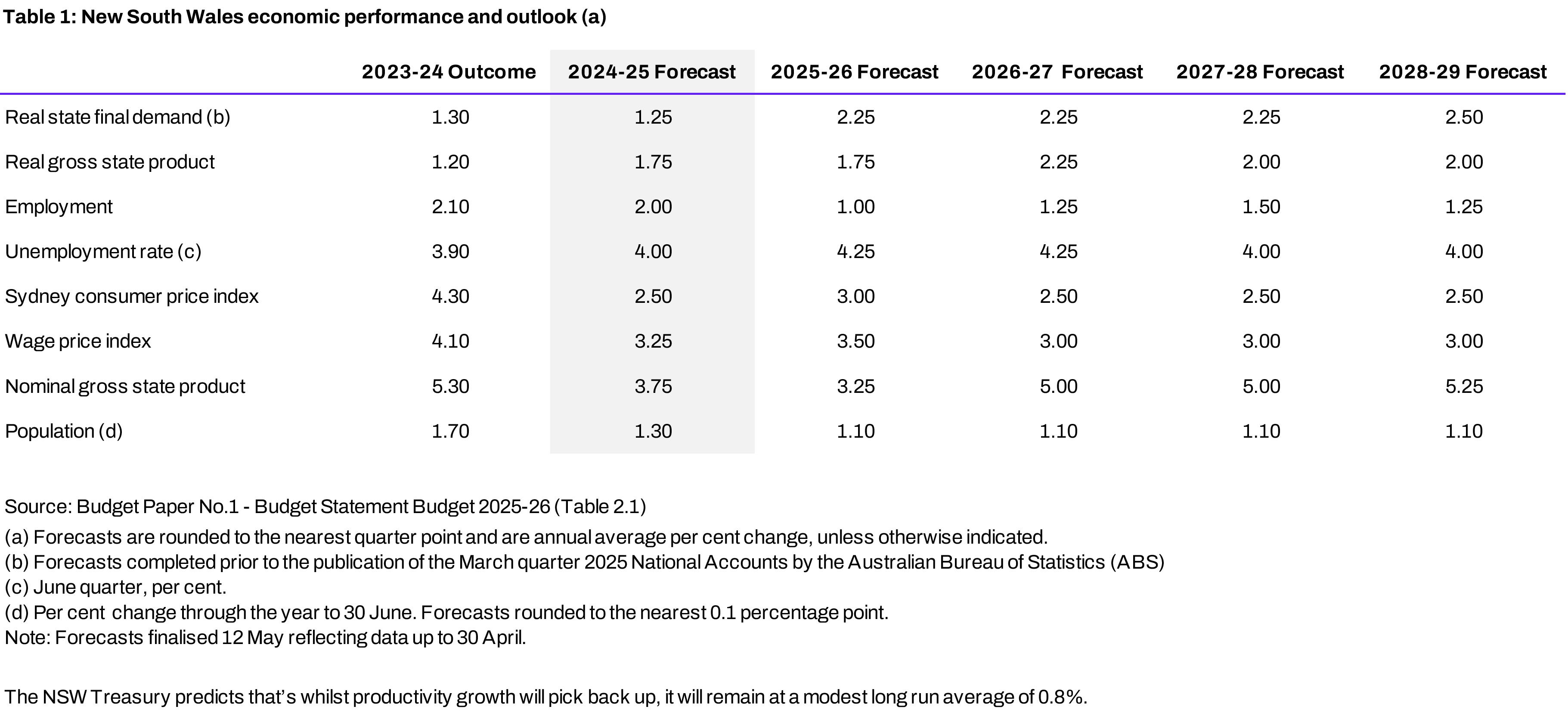

The 2025–26 NSW Budget outlines a cautiously optimistic economic outlook, with a projected return to surplus by 2027–28. Inflation has eased to 2.3%, and real wages are growing, but global uncertainty, weak exports, and structural productivity constraints continue to weigh on business confidence.
Gross debt is forecast to stabilise at around 20% of Gross State Product (GSP) – more than triple the 6.2% level in June 2019. The 2025–26 budget result is a $3.4 billion deficit, with a $1.1 billion surplus forecast for 2027–28. Treasury expects productivity growth to rebound modestly to 0.8%, though long-term challenges remain.
From a business perspective, the budget reflects a steady fiscal trajectory but highlights several key concerns:
.jpg)
Table 1: New South Wales economic performance and outlook (a)

Table 2: Key Budget aggregates for the general government sector

This section outlines key measures for business and also highlights Business NSW advocacy wins for the business community.
BUSINESS POLICY
HOUSING
COST-OF-LIVING RELIEF
SKILLS, INNOVATION, AND GROWING THE WORKFORCE
Equipping the workforce to build NSW homes: As part of the plan to tackle the housing crisis, the Minns Labor Government will deliver $3.4 billion in investment in TAFE and Skills to build the skilled workforce needed to construct more homes across the state. This includes:
ENERGY & ENVIRONMENT
INFRASTRUCTURE & TRANSPORT
SUPPORT FOR REGIONS
TOURISM
Ben Pike, Head of Marketing and Media | ben.pike@businessnsw.com